
‘Cartoonist With an Ego’ Still Makes Art
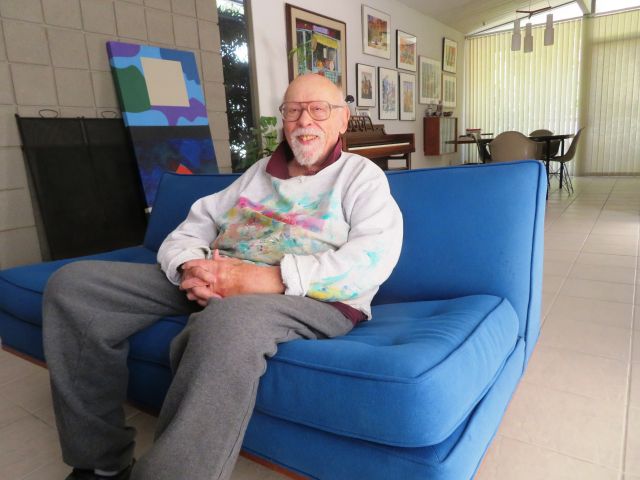 |
|
|
It’s rare for a commercial artist – the sort who draws for advertising or packaging – to win fame. So it’s not surprising that David Broad remains unknown.
It’s a pleasure to call attention to a man who did his first commercial work while a GI serving in the European Theater during World War II, and whose subsequent work, while varied, reflects both the changing times and the artist’s sense of fun.
Broad, a man who knows what he likes and sticks to it, decided to become an artist around age 11, when he watched a cousin draw. And he and his wife, Sue, who bought their brand-new Eichler in the San Rafael neighborhood of Terra Linda an hour after they saw it, have been living there now since 1960.
“When I saw the Eichler it blew my mind,” Broad recalls, adding, “I always liked modern, contemporary art and I loved [furniture maker] Herman Miller, and I loved everything about it.”
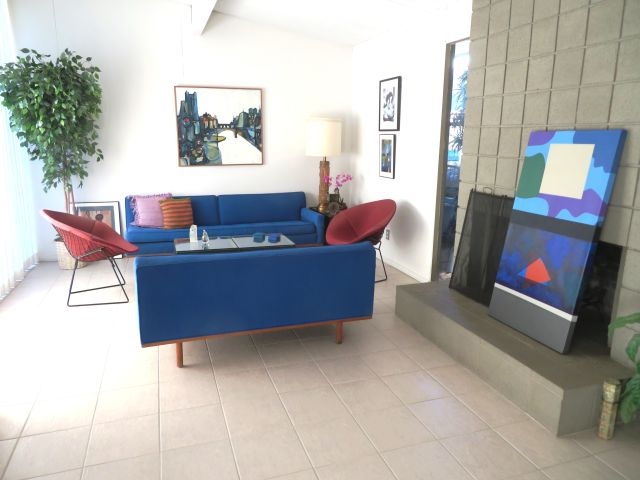 |
|
|
Broad, who grew up mostly in Baltimore, began studying art while in high school, during weekends at the Maryland Institute College of Art.
After a year at the University of Maryland (pre dental), Broad found himself in the Field Artillery, helping haul big guns up steep hills in France. “The half-ton trucks burned out,” he says.
He recalls painting illustrations, including one nude, on the fuselages of a couple of planes, and flying along on observation missions. He did his first professional drawing, first while stationed in France, and then in Germany with the Army of Occupation. After his discharge he continued to create art for the Army, working as a civilian near Frankfort am Main.
One early educational poster instructed GIs how to care for themselves after engaging in intercourse.
“In that unit, it was headed by some of the top New York illustrators. I learned so much,” he says.
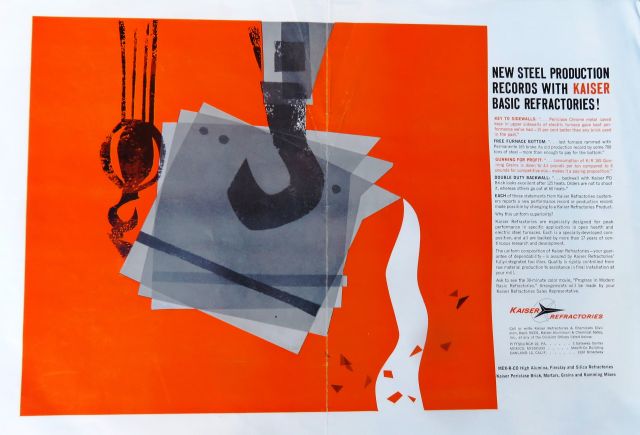 |
|
|
But what impressed Broad the most, and inspired his own style, was the work of French illustrators. “We had the best realistic illustrators,” he says of America, “but they [the French] had the highest-caliber cartoonists, and that appealed to me.”
“That’s what spurred me to like cartoon art. I used to call myself a design illustrator, which is basically a cartoonist with an ego.”
Broad notes he had always been a fan of comic strips.
Back in the U.S. Broad attended the prestigious Pratt Institute in Brooklyn while working summers for a commercial studio in Milwaukee, where he had lived for some time as a boy. He brought to the city’s commercial art scene something new – that sophisticated French design sensibility, he says.
Semi-annual trips to Europe while he was a young artist, staying for three months in Paris, and attending bullfights in Spain (the influence of Hemingway) kept him attuned to that sensibility, he says.
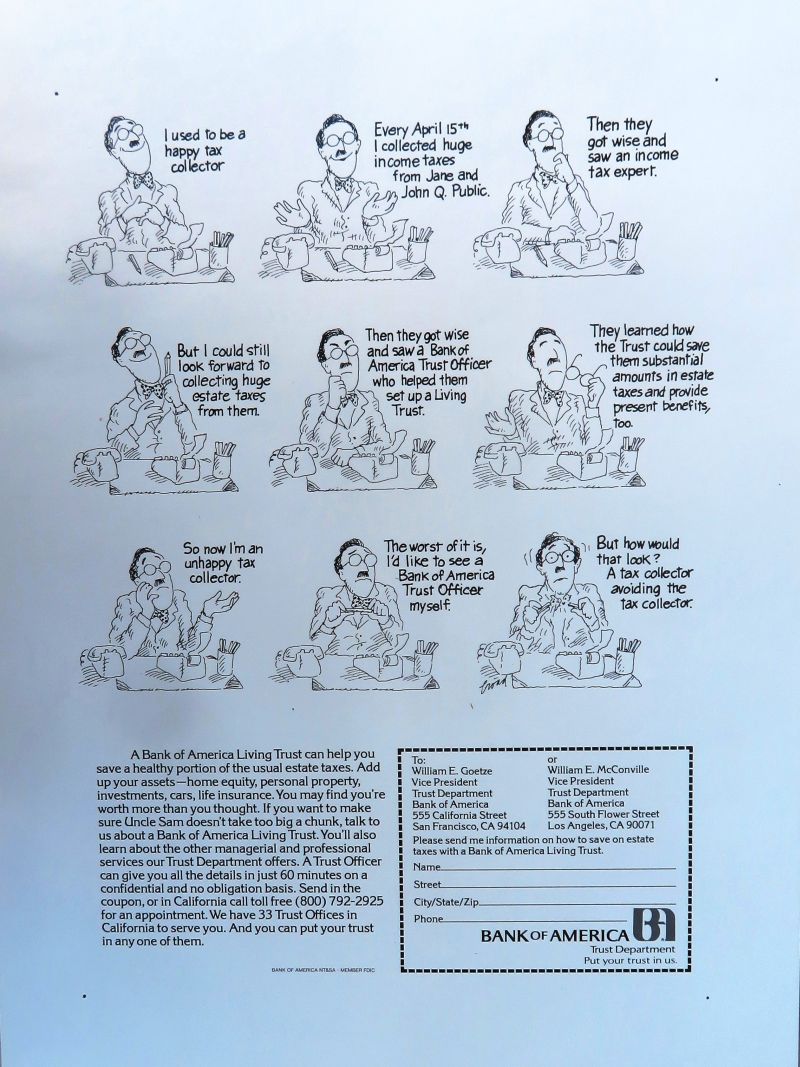 |
|
|
His home is filled with painted scenes from France and Spain (along with Sausalito, Richmond, and other local spots), some done in the 1940s and ‘50s, some much later, drawn from subsequent trips.
A visit to his cousin in Pasadena, with its warm days, cool nights, convinced Broad to move west. A visit to San Francisco convinced him to move north. He and Sue were soon living in Sausalito. Broad has painted artist Jean Varda’s famous live-aboard ferryboat but was never part of the Bohemian artist scene.
Living in Terra Linda and working in the city (until the 1980s, when he attached a studio to his home), Broad did illustrations for many of the Bay Area’s leading firms, including Bank of America, where he was their chief illustrator for four or five years in the early 1970s.
Broad worked for Landphere Associates studio, and on his own.
“I didn’t get rich but it was profitable, you know,” he says. “I found [commercial illustration] enjoyable. I didn’t enjoy painting so much. I’d rather do the cartoon stuff.”
On a few jobs, the art director would hand Broad a sketch and ask him to make it pretty. But usually, Broad says, “They gave me free reign. They’d give me a headline or something like that, and I’d do some sketches.”
Mid-career, Broad shopped around proposals for newspaper comic strips. “I got a lot of rejections,” he says.
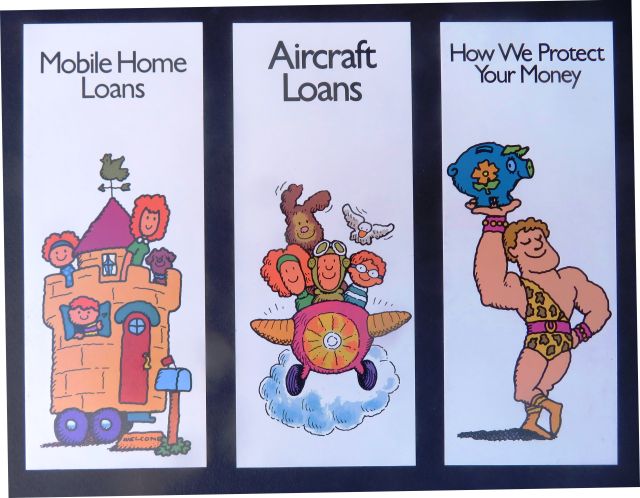 |
|
|
Though he studied in Brooklyn, Broad never thought of making it big in New York. “I didn’t think I could compete. I didn’t think I had the ability,” he says. “In Milwaukee I did incredible, but it’s a big difference.”
The Midwest had a vital commercial art scene. In moving to L.A., Broad says, “I took a 30 percent decrease in income, and moving to San Francisco I took another 10 percent. But I loved it. I wouldn’t want to be anywhere else.”
Broad never drew ads for Joe Eichler, but he did meet the developer, stopping into Joe’s San Francisco office and telling him, “I just love what you’re doing. I even have some stock in your company.”
They talked about Eichler’s development on Marin’s Strawberry Point, large homes on bayside lots.
“I asked how much the land was costing,” Broad says. “He said $30,000 a lot. I said, ‘Well if I could build a thousand-dollar home, I think I could swing it.’ He didn’t think that was funny.”
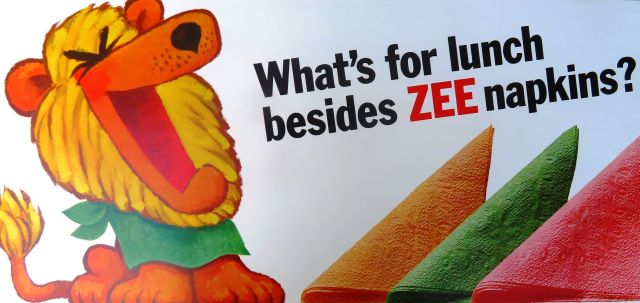 |
|
|
Broad retired from commercial art in the ‘90s when it became necessary to draw using a computer. “I was taking a course. The first thing the instructor said lost me.”
Since then he has become a fine artist, watercolors, gouaches, assemblage, even political work. His studio has three-dimensional caricatures of Clinton, Reagan, and George Bus, Sr. He does cartoons lampooning our current president. “He’s been driving me crazy,” Broad says.
Broad is proud of honors received from the California Watercolor Society. And a current project is a series of abstract paintings based on the triangle.
His wife, Sue, remains active as well, taking classes. Their three children, two boys and a girl, all live in the Bay Area, providing David and Sue with six granddaughters and one grandson.
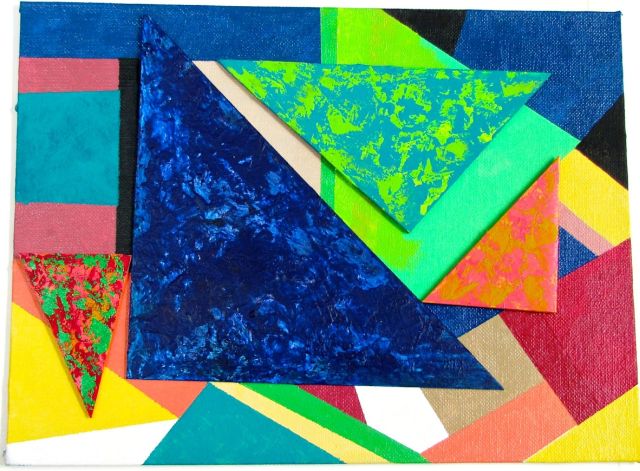 |
|
|
- ‹ previous
- 670 of 677
- next ›



